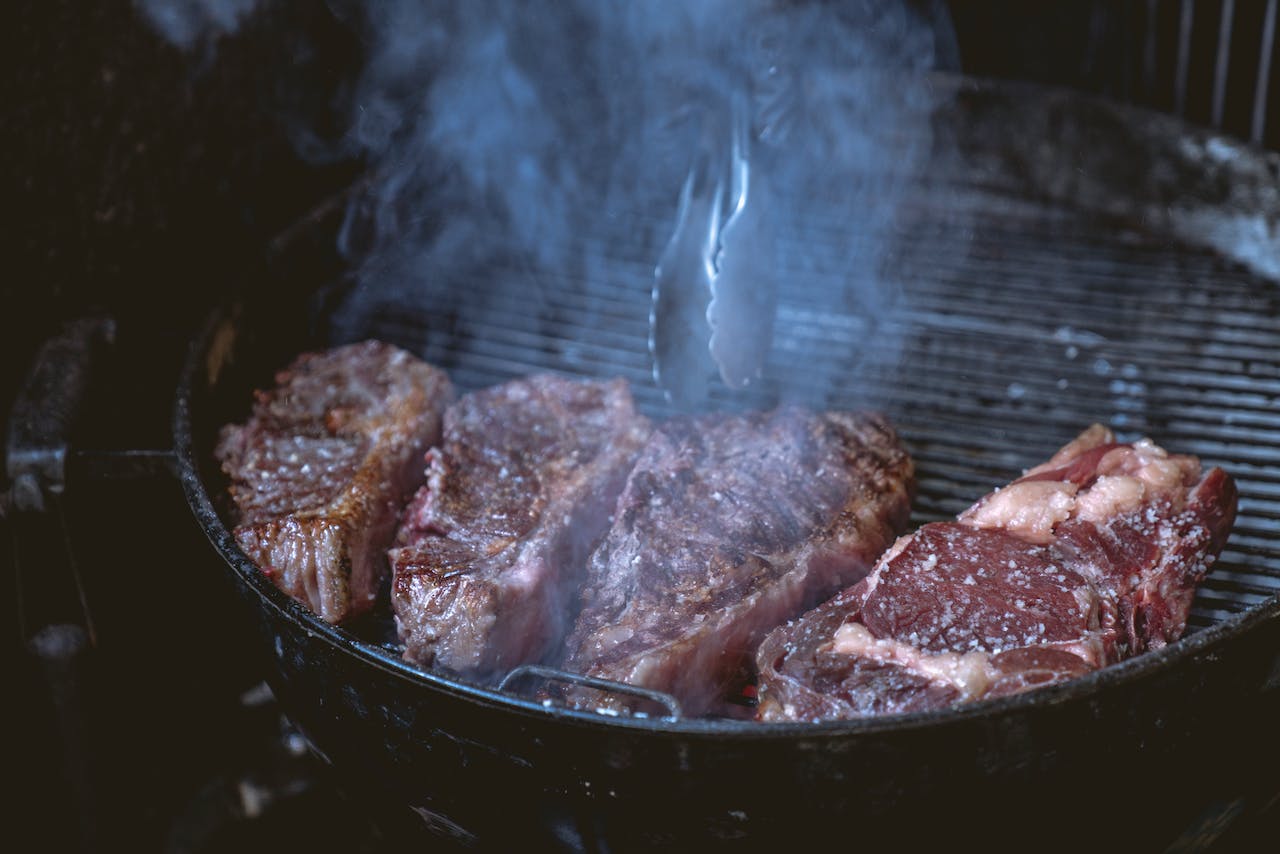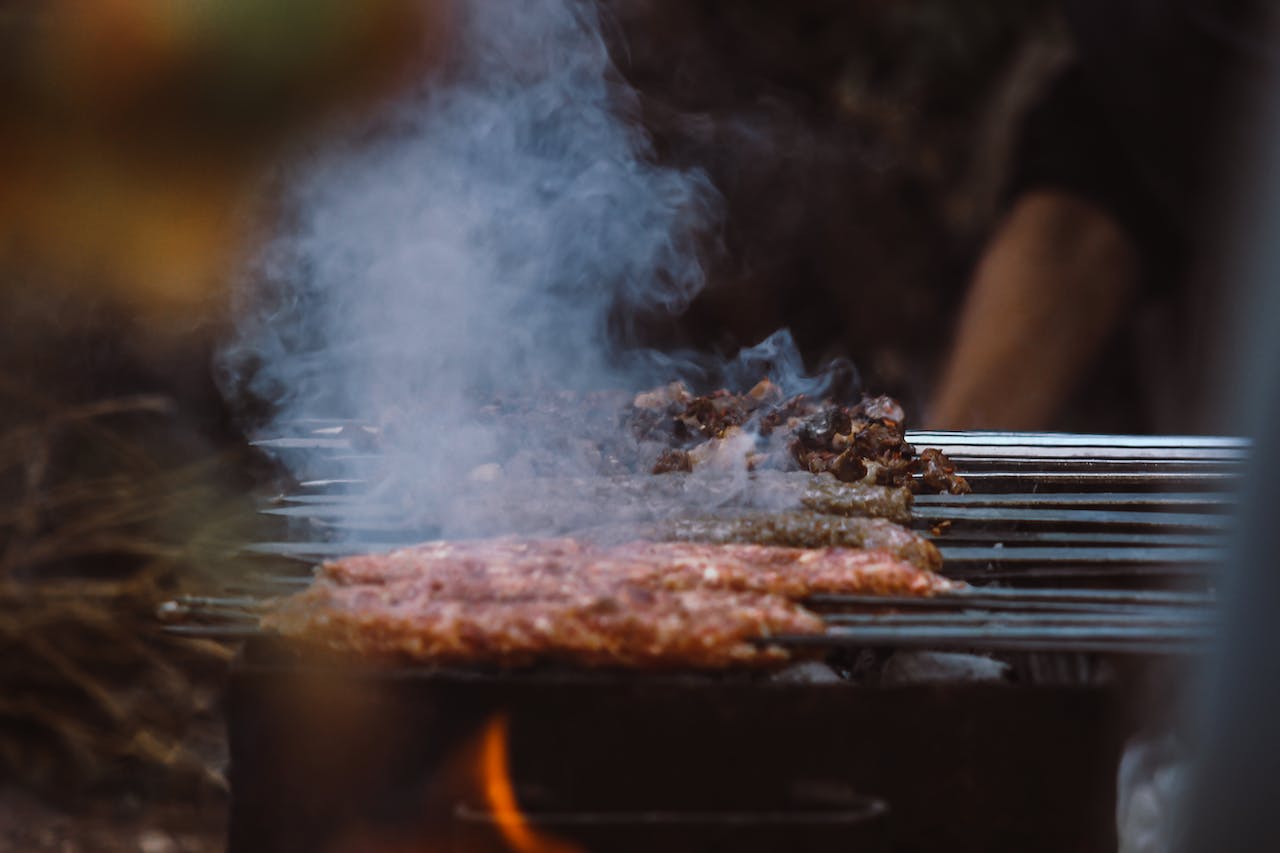Smoking meat is an age-old culinary practice that has been perfected over centuries, transforming simple cuts of meat into flavorful delicacies through the art of slow cooking and smoke infusion. This cooking technique, deeply rooted in tradition, not only enhances the taste of meat but also preserves it, allowing for a longer shelf life. The allure of smoking meat lies in its ability to impart complex flavors and tender textures that are hard to achieve through other cooking methods. Whether you’re a seasoned pitmaster or a novice eager to explore the smoky world of BBQ, understanding the fundamentals of meat smoking is essential.
This guide aims to cover everything you need to know about smoking meat, from selecting the right equipment and cuts of meat to mastering the smoking process itself. We’ll delve into the different types of smoking, explore various wood flavors, and share tips and tricks to ensure your smoked meats are a hit at every BBQ. Join us on this flavorful journey as we unlock the secrets to smoking meat, ensuring you’re well-equipped to create mouthwatering smoked dishes that impress friends and family alike.
Understanding the Basics of Smoking Meat
Understanding the basics of smoking meat is crucial for anyone looking to delve into this rewarding cooking method. Smoking meat involves cooking it slowly over low heat, with the smoke from burning wood imparting flavor and tenderness to the meat. This process can be broken down into a few key components:
- Types of Smoking: Primarily, there are two types of smoking: hot smoking and cold smoking. Hot smoking cooks the meat thoroughly, making it safe to eat straight from the smoker. On the other hand, cold smoking imparts flavor but does not cook the meat, requiring it to be cooked to safe temperatures before consumption.
- Meat Selection: Almost any type of meat can be smoked, from beef brisket and pork ribs to chicken and fish. The choice of meat can influence the smoking technique and duration.
- Smoke Flavor: The type of wood used for smoking plays a significant role in the flavor profile of the meat. Different woods impart different flavors, with options ranging from hickory’s strong taste to applewood’s subtle sweetness.
- Temperature and Time: Smoking meat is a slow and low cooking process. Maintaining a consistent temperature and allowing enough time for the meat to smoke is essential for achieving the perfect tenderness and flavor.
By grasping these basics, you set the foundation for successful smoking sessions, enabling you to experiment with different meats, woods, and techniques to find your preferred smoking style.
Equipment and Tools Needed
To embark on the journey of smoking meat, having the right equipment and tools is essential. The smoker is at the heart of this culinary adventure, with various types available to suit different needs and preferences. Offset smokers, known for their traditional design, separate the firebox from the smoking chamber, offering excellent flavor and temperature control. Vertical water smokers, compact and efficient, are ideal for those with limited space. Electric and pellet smokers provide convenience with digital controls for precise temperature management, making them ideal for beginners and those who prefer a “set it and forget it” approach. In addition to the smoker, a few critical tools will enhance your smoking experience:
- Thermometers: A reliable meat thermometer and a separate smoker thermometer are indispensable for monitoring internal meat temperatures and the smoker’s ambient temperature.
- Wood Chips or Pellets: These are the source of smoke, with various types like hickory, mesquite, apple, and cherry offering different flavors.
- Meat Probes: For checking the doneness of your meat without opening the smoker too often, leading to heat loss.
- Tongs and Meat Claws: Safely handle and shred your smoked meats.
- Cleaning Supplies: To maintain your smoker, including brushes for grates and solutions for removing residue.
With these essential tools and equipment, you’re well-prepared to tackle any smoking project, ensuring delicious results and a smooth smoking process from start to finish.
Selecting and Preparing Your Meat
Selecting and preparing your meat is a pivotal step in the smoking process, one that can significantly influence the final outcome of your smoked delicacies. The choice of meat is vast, ranging from the robust flavors of beef brisket and pork shoulders to the delicate textures of chicken and fish.
- When selecting meat for smoking, look for cuts that are well-marbled with fat, as this will keep the meat moist during the long cooking process and enhance its flavor.
- Once you’ve chosen your meat, preparing it properly is just as crucial. This may include trimming excess fat to ensure even smoking, applying a brine or marinade to tenderize and infuse the meat with additional flavors, and coating it with a rub of spices and herbs that complement the meat’s natural flavors and the smoke.
Understanding Woods for Smoking
The choice of wood used in smoking meat is as critical as the meat selection itself, as it directly influences the flavor profile of the final dish.
- Different types of woods impart distinct flavors, ranging from the strong, bold tastes provided by hickory and mesquite to the milder, sweeter notes from fruitwoods like apple and cherry. It’s important to match the wood flavor with the type of meat smoked; for instance, robust woods complement red meats well, while poultry and fish are better suited to lighter, fruitier woods.
- Beyond just the type of wood, the form it comes in—chips, chunks, or pellets—can also affect the smoking process. Chips burn quickly and are ideal for short smokes, chunks provide a longer-lasting smoke for medium-duration cooks, and pellets are used in pellet smokers for a clean, consistent burn.
The Smoking Process
The smoking process is a meticulous art that combines patience, precision, and a deep understanding of heat and flavor. It begins with setting up your smoker for success, ensuring it’s clean and ready to evenly distribute smoke, and maintaining a consistent temperature throughout the cooking period. As the smoker preheats to the desired temperature—typically between 225°F and 275°F for most meats—the meat, prepared with rubs, brines, or marinades, is placed inside.
Managing the smoker’s temperature is key; fluctuations can affect the cooking time and the final flavor. The meat absorbs the smoke during the initial hours, developing a rich, complex taste and the characteristic pink smoke ring beneath the surface.
It’s vital to resist the temptation to frequently open the smoker throughout the process, as this can lead to significant heat loss and extend cooking times. Patience is rewarded in the end with tender, flavorful meat that falls off the bone, embodying the essence of true barbecue.
Cooking Times and Temperatures
Mastering cooking times and temperatures is crucial for achieving perfectly smoked meat, with each type of meat requiring a specific internal temperature to ensure it is both safe to eat and at its most flavorful and tender. Generally, the low and slow approach defines smoking, with temperatures typically set between 225°F and 275°F.
- Beef brisket, for example, may need to cook for 12 to 18 hours to reach the desired tenderness, aiming for an internal temperature of around 195°F to 205°F.
- Pork shoulders or ribs, on the other hand, might cook for 6 to 14 hours, depending on their size, to reach an internal temperature of 190°F to 195°F.
- Poultry, like chicken, requires a higher final temperature of around 165°F but with shorter cooking times than beef and pork.
A reliable meat thermometer is essential to accurately gauge doneness without repeatedly opening the smoker and losing heat. Understanding these guidelines helps ensure that each piece of meat is perfectly smoked, with a melt-in-your-mouth texture and a depth of flavor that can only be achieved through carefully managing time and temperature.
Flavoring and Seasoning
Flavoring and seasoning play pivotal roles in the art of smoking meat, serving as the foundation upon which the smoke builds to create a complex taste profile. The process begins long before the meat hits the smoker, starting with the selection of rubs, brines, and marinades that both enhance and complement the natural flavors of the meat.
- Rubs, a blend of spices and herbs, are applied directly onto the surface of the meat, creating a crust that seals in flavors and moisture.
- Brines, salty solutions in which the meat can soak, work by infusing moisture and flavor deep into the meat, ensuring it remains juicy throughout the smoking process.
- Marinades, combining acids, oils, and seasonings, tenderize the meat and add a depth of flavor. The choice of seasoning should harmonize with the type of wood used for smoking, as each wood imparts a unique flavor that can either elevate or overpower the seasoning.
Experimentation is encouraged, allowing the discovery of perfect pairings that make each smoked dish a unique culinary experience. Whether you’re aiming for the subtle sweetness of applewood with a herby chicken rub or the robust intensity of mesquite with a spicy beef rub, mastering the art of flavoring and seasoning is essential for creating smoked meats that are rich, flavorful, and deeply satisfying.
Safety Tips
Keep raw and cooked meats separate, and use separate utensils. Also, if not consumed immediately, store smoked meat in the refrigerator within two hours of cooking.
Cleaning Maintenance
Regular cleaning of your smoker is essential for safe operation and to prevent off-flavors. Follow the manufacturer’s instructions for cleaning and maintenance.
Conclusion
In conclusion, mastering the art of smoking meat is a rewarding journey that blends tradition with personal creativity. From understanding the basics of smoking and selecting the right equipment and meats to experimenting with woods, flavors, and seasonings, each step offers an opportunity to deepen your culinary skills and appreciation for this age-old cooking method.
Patience and attention to detail are key, as is a willingness to learn from each smoking session, whether it results in perfectly tender brisket or a lesson in temperature control. Embrace the process, including the slower pace and the anticipation it builds, as part of the unique pleasure of smoking meat. You’ll develop your signature style with practice, creating dishes that delight the senses and bring people together. We encourage you to continue experimenting, sharing your experiences, and above all, enjoying the delicious rewards of your smoking endeavors. Happy smoking!


